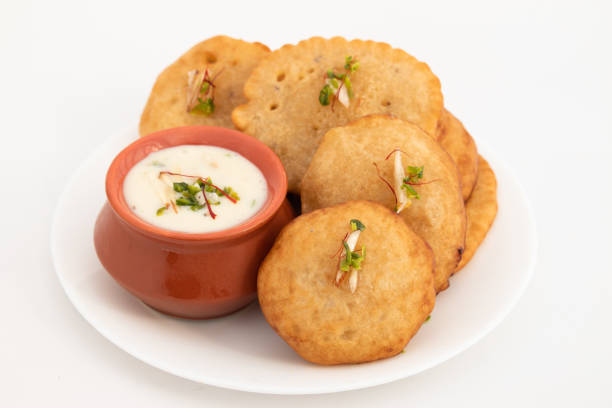Holi, the festival of colors, is a vibrant celebration that marks the arrival of spring and the triumph of good over evil. It is a time when families and friends come together to revel in joy, play with colors, and indulge in an array of delectable treats. Among the many traditional dishes prepared during Holi, one stands out as a universal favorite—Pua. This sweet, deep-fried delicacy holds a special place in the hearts of Holi celebrants across India, especially in the northern regions.
The Origins of Pua
Pua, also known as malpua in some regions, has a rich history that dates back centuries. It is believed to have originated in the Indian subcontinent and has been mentioned in ancient texts and scriptures. The dish is often associated with religious offerings and festivals, making it an integral part of Hindu culture. Over time, Pua has evolved, with each region adding its unique twist to the recipe.
The Art of Making Pua
The preparation of Pua is a labor of love, requiring a blend of simple ingredients and meticulous technique. The basic ingredients include flour (usually wheat or refined flour), sugar, milk, and ghee (clarified butter). Some variations also incorporate semolina (sooji), fennel seeds, and cardamom for added flavor and texture.
The process begins by creating a thick batter using flour, milk, and a pinch of sugar. The batter is then left to rest, allowing the flavors to meld. Once ready, small portions of the batter are poured into hot ghee and deep-fried until golden brown. The fried Puas are then dipped in a sugar syrup infused with cardamom or saffron, giving them their characteristic sweetness and aroma.
Regional Variations
While the basic recipe remains consistent, Pua enjoys a variety of regional interpretations. In Bengal, for instance, it is known as malpua and is often served with rabri (a thickened, sweetened milk dish). In Odisha, Pua is a popular offering to the gods during festivals and is made with a mix of rice flour and jaggery. In Uttar Pradesh and Bihar, it is commonly prepared during Holi and is sometimes garnished with chopped nuts for added richness.
Pua and Holi: A Perfect Pair
Pua’s association with Holi goes beyond its delicious taste. The dish symbolizes the sweetness and joy of the festival. As families gather to celebrate, the aroma of Pua frying in ghee fills the air, creating a sense of warmth and togetherness. It is often served alongside other Holi specialties like gujiyas, thandai, and dahi bhalle, making it an essential part of the festive feast.
Moreover, Pua’s simplicity and versatility make it a favorite among home cooks. It requires no fancy ingredients or elaborate techniques, yet it never fails to impress. Whether enjoyed hot and crispy or soft and syrup-soaked, Pua is a treat that appeals to all ages.
A Dish That Bridges Generations
One of the most beautiful aspects of Pua is its ability to bring people together. The process of making Pua is often a family affair, with elders passing down their secret recipes and techniques to the younger generation. As children gather around the kitchen, eagerly waiting to taste the first batch, they are not just learning how to make a dish—they are inheriting a piece of their cultural heritage.
Conclusion
Pua is more than just a dish; it is a symbol of tradition, love, and celebration. As Holi approaches, the sight of golden Puas sizzling in ghee and the sound of laughter echoing through homes serve as a reminder of the festival’s true essence—joy, togetherness, and the sweetness of life. So, this Holi, as you immerse yourself in the colors and festivities, don’t forget to savor a piece of Pua, the timeless delight that has been gracing Holi celebrations for generations.

